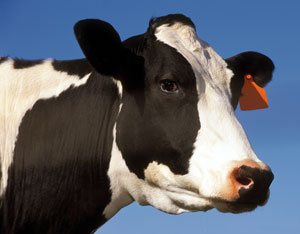Considerations when selecting feed for cattle operations
Now more than ever, picking the best feed for a cattle operation is critical. As producers continue to face rising input costs, deciding how to supplement the herd economically and efficiently is critical to an operation’s success.
Livestock nutrition experts say there is no right or wrong feed applicable across a wide variety of farms. “I am of the opinion that beef cows should graze as much as possible and be fed minimal supplement, for the sake of controlling costs,” Eric Bailey, Ph.D., state beef extension specialist with the University of Missouri, said.
Quality not Quantity
Giving a cow feed will cost more compared to if the cow gets her feed through grazing pasture. However, there are times during the year in which supplements are necessary to help fill forage shortfalls. “Most times when we need to fill a forage gap, our cattle are short on energy in their diet,” Bailey explained. “Hay is the classic energy feed, but the quality of the hay impacts energy content bigly.”
Livestock nutrition experts recommend producers take steps to ensure their hay retains maximum nutritional content. Many producers opt to wait until it’s dry enough or convenient to harvest their hay. Though yield may be excellent, the quality may be poor. “No matter how much 50 percent TDN (total digestible nutrients) hay you put out for a beef cow, she will not meet her nutrient needs on hay alone,” Bailey added. “Think about trying to harvest hay in May or as early in June as possible to optimize hay quality.”
Protein and Energy
Protein and energy are both essential factors to good animal health. Dr. Bailey uses the analogy of a cow being like a brick wall. A brick wall consists of bricks and mortar. In the cow scenario, proteins are the “bricks” and energy is the “mortar.” “I worry a lot more about mortar, than I do bricks for Missouri beef cows,” Bailey stated.
Many producers may incorrectly believe that good protein content automatically means good energy content. Dr. Bailey says in many situations that is not the case. “I test a lot of fescue hay that is 8 to 10 percent crude protein that has very poor energy,” Bailey said.
Look at TDN
Livestock nutrition experts recommend a rule of thumb for energy is to look at TDN. Dr. Bailey states 55 percent TDN is sufficient for a pregnant cow and more than 60 percent TDN is adequate for a lactating cow. In Missouri, producers should focus more on TDN than protein for their beef cattle operations. “Poor quality fescue often has plenty of protein, but is deficient in energy,” Bailey added.
Feed Factor
While many factors can be considered when looking at selecting feed, many times cost is the determining issue. Nutrition experts recommend producers keep in mind feed should be vetted by someone who understands nutrition. “The commodity mix that most feed mills sell is formulated to be used in a wide variety of situations,” Bailey said. “If someone is trying out a unique feed, or wanting to make a big change, I recommend talking to someone with MU Extension to make sure that the proposed change is in alignment with what the cows need.” In the end, finding the right feed mix is a combination of meeting the cattle’s nutritional needs while also meeting the producers’ bottom line.






